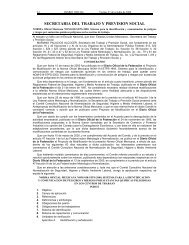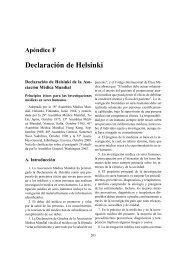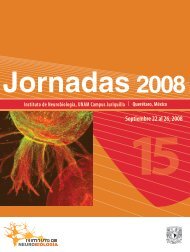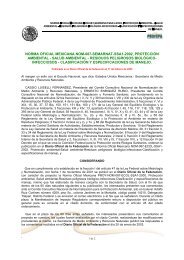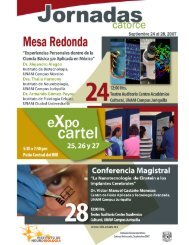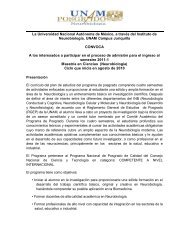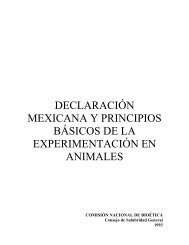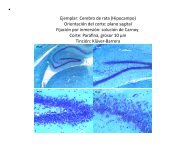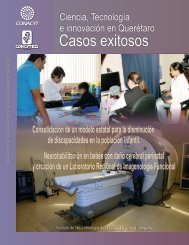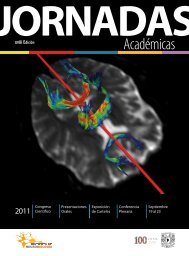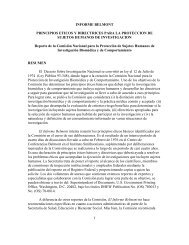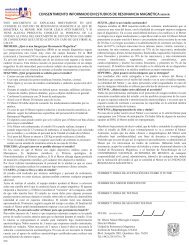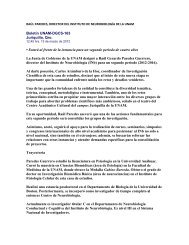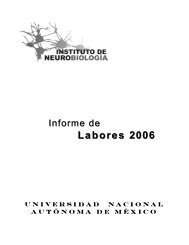Hormonas Tiroideas y Cerebro. Notas Sobre La Relación Bocio y ...
Hormonas Tiroideas y Cerebro. Notas Sobre La Relación Bocio y ...
Hormonas Tiroideas y Cerebro. Notas Sobre La Relación Bocio y ...
You also want an ePaper? Increase the reach of your titles
YUMPU automatically turns print PDFs into web optimized ePapers that Google loves.
Thyroid Hormone Metabolism<br />
Aurea Orozco and Carlos Valverde-R.<br />
Departamento de Neurobiología Celular y Molecular. Instituto de<br />
Neurobiología. UNAM, México.<br />
Introducción.<br />
Thyroid hormone 3,5,3'-triiodothyronine (T 3 ) and its precursor thyroxine (T 4 ) are iodinated<br />
compounds known to influence gene expression in virtually every vertebrate tissue. Fundamentally,<br />
thyroid hormone (TH) signaling results from the interaction of nuclear TH receptors (TRs) with specific<br />
target gene promoters, a process that can either enhance or repress transcription (Figure 1). This<br />
process is modulated via binding of TH, the ligand, to the TRs, which results in rearrangement in the<br />
composition of the transcriptional complex (reviewed by 1-2). Signaling through this pathway is<br />
sensitive to changes in serum TH concentrations. The current paradigm of TH action also recognizes<br />
that TH signaling in individual tissues can change even as serum hormone concentrations remain<br />
relatively constant due to intracellular local activation or inactivation of TH (reviewed by 3-4). The<br />
mechanism underlying this physiological regulation is deiodination.<br />
T 4<br />
T 3<br />
TR<br />
T 3<br />
T 3<br />
mRNA<br />
Figure 1. TH regulate gene transcription. In order to<br />
exert their biological action, T 4 or T 3 must enter the target<br />
cell, but it is T 3 the hormone that binds to nuclear TRs.<br />
These receptors are in turn bound to thyroid hormone<br />
response elements (TRE) in the promoter region of THdependent<br />
genes.<br />
The iodothyronine deiodinases D1, D2, and D3 regulate the activity of TH via removal of<br />
specific iodine atoms from the precursor molecule T 4 (Figure 2) These 3 enzymes constitute a group of<br />
dimeric integral membrane proteins that can activate or inactivate TH, depending on whether they act<br />
on the phenolic or tyrosil rings of the iodothyronines, respectively. D2 generates the active form of TH<br />
T 3 via deiodination of T 4 . In contrast, D3 inactivates T 3 and, to a lesser extent, prevents T 4 from being<br />
activated. Finally, D1 activates or inactivates T 4 on an equimolar basis, and its role in health remains<br />
to be clarified (Table 1), (reviewed by 5).<br />
The activity of the deiodinases can substantially alter TH signaling in a given cell. While the<br />
total concentration of circulating T 4 exceeds that of T 3 by 2 orders of magnitude, T 4 is tightly bound to<br />
carrier proteins, and the free concentrations of T 4 and T 3 are quite similar. Both enter the cell via<br />
transporters, including the monocarboxylate transporter 8 and the organic anion transporting<br />
polypeptide C1 (6). Once inside the cell, T 4 can be activated via conversion to T 3 by the D2 pathway,<br />
such that the cytoplasmic pool of T 3 includes both T 3 from the plasma (T 3 [T 3 ]) and T 3 generated by D2<br />
(T 3 [T 4 ]), (Figure 3). Alternatively, D3 acts at the plasma membrane to decrease local T 3<br />
concentrations. Thus, the deiodinases are critical determinants of the cytoplasmic T3 pool and<br />
therefore modulate nuclear T 3 concentration and TR saturation. In normal rats, the D2 pathway is<br />
responsible for about half of the nuclear T 3 content in the brain, pituitary gland, and brown adipose<br />
tissue (reviewed by 4-5, 7).<br />
16



